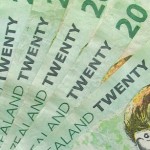Gold rose for a fourth day following two days of surprisingly disappointing U.S. economic data, which dampened speculations that the Federal Reserve will start decelerating its $85 billion bond purchasing program in September. Some safe haven buying supported prices amid growing possibility that the U.S. and other Western nations will intervene in the Syrian civil war after a chemical attack against civilians was reported last week.
On the Comex division of the New York Mercantile Exchange, gold futures for December delivery traded at $1 403.00 per troy ounce at 7:49 GMT, up 0.71% on the day. Futures ranged between days high of $1 406.90, the strongest level since June 7, while days low stood at $1 395.40 an ounce. The precious metal surged 0.38% on Monday, a third straight day of gains, and extended its weekly advance to 0.4% following Tuesdays jump.
The yellow metal was well supported in recent weeks as low prices sparked an increase in physical demand, and mainly from its top consumers India and China. Gold jewelry demand in Indonesia, Southeast Asia’s biggest buyer, may surge to a four-year high. The precious metal drew further support amid downbeat U.S. data in the past couple of days which reinforced some of the FOMC policy makers’ stance that the U.S. economy requires further monitoring before Quantitative Easing is decelerated.
On Monday, the commerce department reported that U.S. durable goods orders dropped by 7.3% in July, mismatching analysts’ projections for a decrease by 4.0% after advancing in June. The preceding month’s reading was revised down to a gain of 3.9% from 4.2%.
Durable Goods Orders ex Transportation, which exclude the more volatile transportation items, marked a 0.6% contraction, underperforming expectations for a 0.5% gain. June’s reading was initially measured as remaining flat but received an upward revision to a 0.1% increase.
Durable Goods Orders ex Defense, which exclude defense expenditures, contracted by 6.7% last month, mismatching an anticipated 2.6% drop from June’s advance of 2.9%, which was revised downward by 0.1% from 3.0%.
Shipments of core capital goods, a category used to calculate quarterly economic growth, declined by 1.5% in July, compared to expectations for a 0.3% increase.
On Friday, the U.S. Commerce Department reported that 0.394 million new homes were sold in the U.S. in July, marking a 13.4% decline. This was the lowest level in nine months and the steepest drop in three years. New Homes Sales completely mismatched projections for a rise to 0.490 million units sold. At the same time, June’s reading received a downward revision to 0.455 million from the previous reading of 0.497 million homes.
The precious metal has rebounded 17% since falling to a 34-month low of $1 180.15 a troy ounce on June 28 but is still en route to cap a 12-year bull run after declining 17% so far this year. The metal slumped amid shifting expectations that the Federal Reserve will decelerate its monetary stimulus and bring it to an end by mid-2014. An exit from the stimulus program would hurt gold’s demand prospects as it is mainly used as a hedge against inflation, which tends to arise when central banks easy money supply.
Market players will be keeping a close eye on this week’s U.S. economic data to further gauge Quantitative Easing’s tapering prospects. Tuesday’s Consumer Confidence is projected to have fallen to 79.3 in August from 80.3 in the preceding month. The S&P/Case-Shiller Composite-20 Home Price Index might also post a decline. Wednesday’s Pending Home Sales might have advanced by 0.1%. On Thursday, the Preliminary Revised GDP is likely to have grown by 2.3%, while consumer spending and core consumer spending (Personal Consumption Expenditures) probably surged by 1.8% and 0.8% in the second quarter respectively. Initial Jobless Claims probably fell by 1 000 in the week ending August 24. On Friday, Personal Income and Spending are expected to have advanced in July but at a slower pace than in June. Core PCE on monthly and annual basis likely rose in July and the Chicago PMI and Final University of Michigan Confidence are projected to have advanced in August as well.
The gold market was also supported as some safe haven buying kicked in following news that the U.S. and its Western nation partners may intervene in the Syrian civil war. U.S. Secretary of State John Kerry said that there is “undeniable” evidence the Syrian regime led by President Bashar al-Assad used chemical weaponry against civilians in the Damascus suburbs last week. Assad denied responsibility and blamed rebels for staging the attacks.
Meanwhile, United Kingdom’s foreign secretary William Hague said his country is convinced that Assad’s regime was behind the attack and that an agreement was met with the U.S. and France for the need of a response. The U.K. government will decide today whether to recall Parliament and seek approval for taking action. The U.S. and its allies have already met in Jordan for what could be a council of war.





